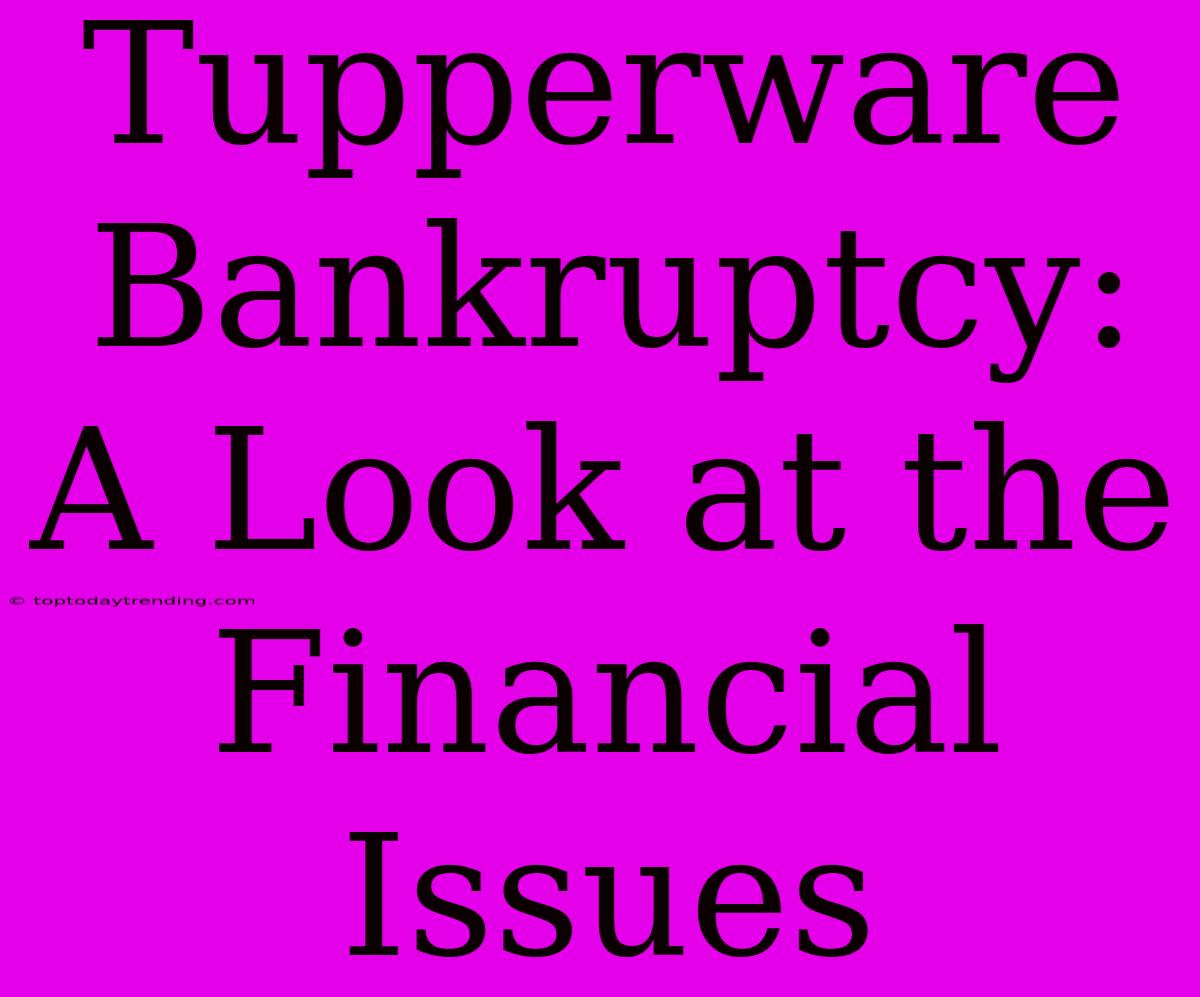Tupperware Bankruptcy: A Look at the Financial Issues
Tupperware Brands Corporation, a household name synonymous with plastic containers and kitchenware, has filed for bankruptcy. This news shocked many, considering the company's long history and iconic status. But while the brand itself is recognizable, the reality is that Tupperware has been struggling financially for years. This article will delve into the key financial issues that led to the company's downfall.
Declining Sales and Revenue:
The most significant contributor to Tupperware's financial woes is the steady decline in sales and revenue.
- Shifting Consumer Preferences: Consumers are increasingly turning away from traditional direct selling models and towards online shopping options. This shift has directly impacted Tupperware, as its sales heavily relied on in-home demonstrations and parties.
- Competition: The market for kitchenware has become incredibly competitive, with a wide range of brands offering innovative products and appealing to modern consumer needs. This increased competition has eaten into Tupperware's market share.
- Economic Downturn: The global economic downturn and inflation have also played a role. Consumers are cutting back on discretionary spending, including purchases of non-essential items like Tupperware products.
High Debt and Financial Leverage:
Tupperware has been saddled with a significant amount of debt, primarily from acquisitions and share buybacks over the years. This high debt burden has significantly limited the company's ability to adapt to changing market conditions and invest in its future.
- Acquisition Strategy: Tupperware's past strategy of acquiring smaller brands, such as BeautiControl and Nutrimetics, has not proven successful. These acquisitions often came with hefty price tags and increased the company's debt load without significantly boosting revenue.
- Share Buybacks: In an attempt to boost stock prices, Tupperware aggressively bought back its own shares, further contributing to its debt accumulation.
Operational Inefficiencies:
Beyond financial issues, operational inefficiencies have also contributed to Tupperware's struggles.
- Supply Chain Issues: The company has faced persistent supply chain challenges, leading to delays and stock shortages.
- Outdated Business Model: Tupperware's reliance on a traditional direct selling model, which has become increasingly less effective, has hindered its ability to adapt to modern consumer behaviors.
The Road Ahead:
The bankruptcy filing for Tupperware represents the end of an era for the once-mighty company. The company is exploring options such as restructuring its business or selling off assets in an attempt to salvage its brand and operations. However, the road ahead is uncertain, and the company faces a daunting challenge in adapting to the changing consumer landscape.
Key Takeaways:
- Tupperware's bankruptcy highlights the challenges faced by traditional direct selling companies in the digital age.
- High debt and financial leverage can significantly constrain a company's ability to adapt and grow.
- The company's failure to keep up with changing consumer preferences and adapt its business model ultimately led to its demise.

